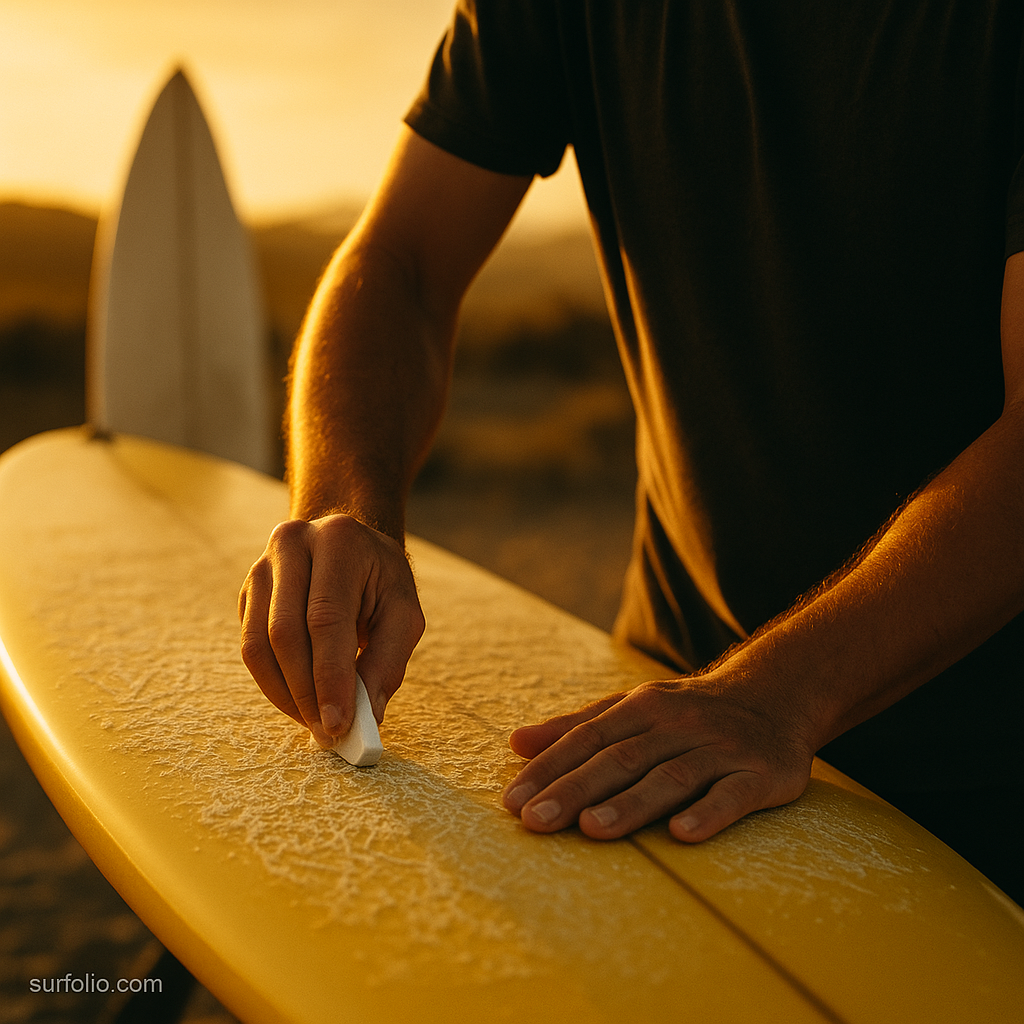
Every surfer knows the magic feeling of locking your feet into perfect traction while gliding across a clean wave. That grip doesn’t happen by accident — it’s the result of the right wax combination. Surf wax isn’t just a finishing touch; it’s an essential part of your surfboard setup that affects performance, stability, and control.
Choosing the best wax combination depends on your board type, water temperature, and personal preference. Here’s how to dial in your wax strategy for consistent traction and peak performance in every condition.
Understanding the Role of Surf Wax
Surf wax provides friction between your feet and the board’s surface. Without it, your deck would feel slick as glass — making even simple maneuvers a slip-fest.
Wax also helps channel water flow and can affect the responsiveness of your board. A proper wax job gives you:
- Grip and stability for better turns and balance
- Confidence during takeoffs and pop-ups
- Consistency through wave sections without slipping
The goal is simple: create traction that feels natural underfoot and matches your surfing style.
The Two Layers of Surf Wax
A proper wax job involves two key layers — base coat and top coat (or temperature coat). Each serves a distinct purpose:
1. Base Coat:
This is your foundation. The base coat uses harder wax to create texture that your top coat can cling to. It’s like the primer for your traction surface.
2. Top Coat (Temperature Coat):
This layer matches your water temperature and provides the sticky feel you rely on for grip. The top coat fills the gaps in your base and refreshes traction before each session.
For best results, always start with a solid base coat — then apply a lighter layer of temperature-specific wax before every surf.
Matching Wax to Water Temperature
Wax formulas are designed for different water temperatures. Using the wrong one can lead to slippery sessions or wax that melts off your board entirely.
Here’s a quick guide:
- Cold (below 60°F / 15°C): Soft wax for maximum stickiness in cold water.
- Cool (58–68°F / 14–20°C): Medium-soft blend for mild conditions.
- Warm (64–74°F / 18–24°C): Medium-hard formula that won’t melt easily.
- Tropical (above 75°F / 24°C): Hard wax for high temps and hot beaches.
Most surfers adjust wax seasonally or when traveling between regions. If you surf a variety of climates, consider a hybrid wax setup for versatility.
The Best Wax Combinations for Maximum Traction
Finding your perfect wax combo often takes experimentation, but some pairings are known to deliver exceptional grip and durability.
1. Tropical Base + Cool Top:
Perfect for surfers in warm climates where water cools seasonally. The tropical base holds firm, while the cool top adds stickiness without melting.
2. Warm Base + Cold Top:
Ideal for cold mornings that warm up through the day. Keeps traction consistent as conditions shift.
3. Universal Base + Temperature-Specific Top:
Many brands offer “all-temp” bases designed to bond well with any top layer. Great for travel or unpredictable conditions.
4. Double-Coated for Longevity:
Apply two thin layers of base wax and one of top coat for longer sessions and fewer rewaxes.
Remember: more isn’t always better. Excess wax can ball up or create drag. Keep layers thin, even, and grippy.
Recommended Wax Brands and Formulas
While personal preference plays a big role, some brands consistently perform across surf regions:
- Sex Wax: A cult classic with easy temperature coding (cold to tropical).
- Sticky Bumps: Known for long-lasting grip and minimal residue.
- Matunas: Eco-friendly option made from organic materials.
- Fu Wax: Ultra-sticky, perfect for performance surfers seeking maximum traction.
- Mrs. Palmers: Excellent for warm climates with extra-tacky feel.
Each brand’s texture and stickiness vary slightly — experiment until you find the feel that matches your surf style.
Applying Wax Like a Pro
A proper wax job takes a few extra minutes but pays off with better traction and longer-lasting performance.
Step-by-step:
- Clean your board. Remove old wax using a wax comb or a gentle heat source like the sun or a hairdryer.
- Apply base coat. Rub firmly in circular motions or crosshatch patterns until bumps form.
- Add top coat. Lightly layer temperature-specific wax over the base in a consistent pattern.
- Refresh often. Before each session, comb and lightly reapply top coat for fresh grip.
Pro tip: Use your wax comb diagonally to maintain texture and renew traction between sessions.
Wax Comb Patterns and Textures
The way you apply wax affects both feel and performance.
- Circular pattern: Creates small, even bumps for consistent grip.
- Crosshatch pattern: Enhances traction under high stress (ideal for shortboards).
- Diagonal strokes: Offers smoother control and easier movement for longboards.
Experiment with patterns to discover what suits your board type and stance best.
Eco-Friendly Wax Options
As surfers, we owe it to the ocean to minimize environmental impact. Many modern waxes use natural or biodegradable ingredients instead of petroleum-based paraffins.
Look for brands labeled eco, biodegradable, or non-toxic — such as Matunas, GreenFix, or Bee’s Knees. These deliver great traction without harming marine ecosystems.
Final Thoughts
The best wax combination depends on your conditions, your board, and your style — but the goal is always the same: reliable traction that lets you surf freely and confidently.
A properly waxed board feels like an extension of your body, responding seamlessly to every carve, cutback, and cross-step. Take time to experiment, keep your deck clean, and respect the ritual of waxing — it’s a small act that connects you to the rhythm of the surf before every session.
